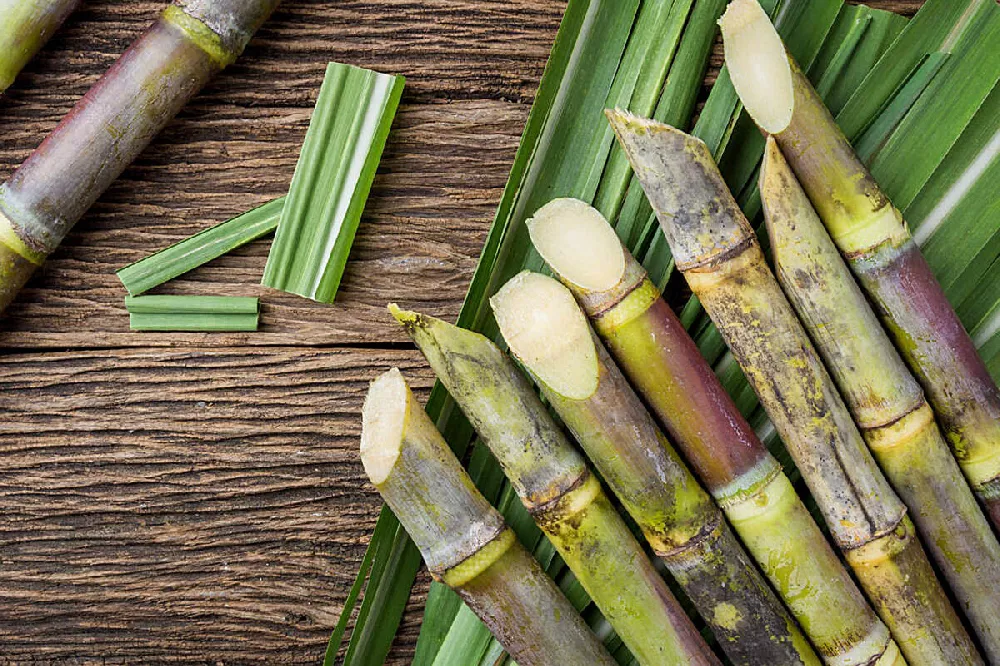Cane Sugar Processing: Conventional Approaches and Modern Innovations
Cane Sugar Processing: Conventional Approaches and Modern Innovations
Blog Article
A Thorough Overview to the Ecological Impact and Sustainability Practices in Cane Sugar Processing
The environmental effect of walking stick sugar handling offers an intricate array of challenges that warrant careful assessment. From dirt destruction and excessive water usage to the carbon footprint connected with cultivation and production, the consequences of conventional methods are significant. On the other hand, the adoption of ingenious sustainability procedures uses a path toward much more accountable production methods. Understanding the interaction in between these problems is critical for stakeholders in the sector. What details methods can be carried out to strike a balance between performance and ecological stewardship? The responses lie in a better take a look at both the challenges and potential solutions.
Review of Walking Stick Sugar Processing
Walking cane sugar processing entails a series of organized steps that change sugarcane into polished sugar. At first, harvested sugarcane is transferred to refining facilities, where it undertakes cleaning to get rid of soil and particles. Following this, the walking stick is crushed to remove juice, which is then made clear by eliminating contaminations with home heating and the addition of lime.
The made clear juice goes through dissipation, where water is gotten rid of to concentrate the sugar web content. This concentrated syrup is after that crystallized through air conditioning, enabling sugar crystals to form. These crystals are separated from the staying syrup using centrifugation, causing raw sugar. To accomplish refined sugar, the raw product undergoes additional purification procedures, which might include filtering system and cleaning to get rid of remaining pollutants and shade.
The last item is then dried and packaged for circulation. Throughout this entire procedure, maintaining effectiveness and quality assurance is crucial to make sure the sugar meets market criteria. Each action in walking stick sugar handling not just adds to the last item but likewise has effects for resource use and waste generation, setting the stage for conversations on sustainability and ecological influences connected with sugar production.
Ecological Obstacles of Manufacturing
The manufacturing of walking cane sugar offers a number of considerable environmental difficulties that warrant attention. One primary issue is the substantial usage of agrochemicals, including fertilizers and pesticides, which can bring about dirt destruction, biodiversity loss, and contamination of neighborhood water resources. The overflow from sugarcane fields typically carries these chemicals into nearby environments, interfering with water life and impacting the health of communities reliant on these water bodies.
One more challenge is the high power intake linked with sugarcane handling. The boiling and refining phases call for significant warm, mostly produced by burning nonrenewable fuel sources, adding to greenhouse gas emissions. Furthermore, the expansive acreage required for sugarcane farming can bring about deforestation and environment devastation, further intensifying environment adjustment and harmful wildlife.
In addition, the labor techniques in some areas raise ethical problems, as employees might encounter bad working problems and insufficient wages. This scenario usually bolsters a cycle of hardship in neighborhood communities. Cane Sugar Processing. Attending to these ecological challenges is important for establishing much more lasting practices in walking stick sugar manufacturing, inevitably benefiting both the environment and the areas included in this sector
Water and Land Use Effect
Water sources and land usage are essential elements in the walking stick sugar sector that significantly affect the setting. The cultivation of sugarcane needs significant water input, with estimates suggesting that it can take in up to 2,000 liters of water per kg of sugar created. This intensive use of water commonly causes exhaustion of neighborhood water sources, affecting not just the sugarcane plantations however also bordering communities and neighborhoods that count on the very same water sources for farming and domestic use.

Moreover, land use for sugarcane cultivation can cause logging and the conversion of natural environments into monoculture haciendas. This method reduces biodiversity, disrupts neighborhood communities, and adds to soil degradation. The expansion of sugarcane areas often trespasses on valuable farming land, creating competitors for resources between food and biofuel production.
Sustainable methods, such as optimizing irrigation strategies and implementing crop turning, are vital to mitigate these impacts. By adopting extra reliable water use and land management approaches, the cane sugar sector can minimize its environmental impact, guaranteeing an equilibrium between agricultural efficiency and ecological preservation.
Greenhouse Gas Emissions
Greenhouse gas discharges stand for a considerable environmental problem within the walking stick sugar processing market, especially as agricultural methods expand to meet international demand. The farming of sugarcane, a plant that flourishes in exotic environments, depends greatly on synthetic plant foods and pesticides, which contribute to nitrous oxide discharges. Additionally, land-use adjustments, including deforestation for new sugarcane ranches, release co2 stored in vegetation and dirt.
During handling, power intake is one more major resource of greenhouse gas emissions - Cane Sugar Processing. Many sugar mills use nonrenewable fuel sources to power machinery and create heat, leading to substantial carbon footprints. In addition, the transportation of raw sugarcane and completed products includes layers of discharges with gas burning in cars
This includes assessing existing farming techniques, refining approaches, and transportation systems to recognize locations for renovation and reduction. Dealing with greenhouse gas exhausts is essential for cultivating an extra lasting walking cane sugar market in a changing climate.

Lasting Practices and Innovations
Sustainable methods and technologies are progressively vital in the walking cane sugar handling sector as stakeholders look for to lower ecological influences while maintaining efficiency. One substantial advancement is the execution of integrated crop monitoring, which maximizes resource use by incorporating dirt management, bug control, and crop rotation methods. This method boosts yield while minimizing chemical inputs and preserving soil wellness.
In addition, the fostering of renewable resource resources, such as check this site out biomass from sugarcane deposits, has actually acquired traction - Cane Sugar Processing. By transforming waste items right into energy, refining centers can minimize their dependence on nonrenewable fuel sources, consequently decreasing greenhouse gas emissions
Water management techniques have also seen enhancements with the recycling and reusing of water in handling plants, considerably lowering freshwater usage. Technologies in innovation, such as accuracy farming, make it possible for farmers to check crop health and resource use much more efficiently, guaranteeing sustainable cultivation methods.
Furthermore, qualification programs like Fair Trade and Jungle Alliance motivate eco responsible farming practices and advertise social equity within the supply chain. By accepting these sustainable practices and innovations, the walking cane sugar handling industry can improve its durability and contribute positively to ecological stewardship.
Conclusion
The ecological impact of walking stick sugar handling offers substantial obstacles, including soil destruction, high water consumption, and greenhouse gas emissions, alongside right here moral concerns related to labor techniques. Attending to these issues via sustainable methods, such as integrated plant administration, renewable energy adoption, and water recycling, is vital. By advertising environmentally liable and socially fair methods in sugar manufacturing, the market can reduce its negative results, making certain a much more sustainable future for both neighborhoods and ecological communities associated with this industry.
Walking stick sugar handling involves a collection of organized actions that transform sugarcane right into refined sugar. Each action in cane sugar handling not only contributes to the final item yet additionally has implications for resource use and waste generation, setting the stage for discussions on sustainability and ecological effects associated with sugar production.
Greenhouse gas discharges stand for a significant environmental concern within the cane sugar processing sector, especially as agricultural techniques broaden to meet global need.Sustainable techniques and advancements are increasingly vital in the walking cane sugar handling sector as stakeholders look for to lower environmental impacts while click here now preserving productivity.The environmental impact of cane sugar processing presents substantial challenges, consisting of soil destruction, high water consumption, and greenhouse gas discharges, alongside ethical issues connected to labor techniques.
Report this page